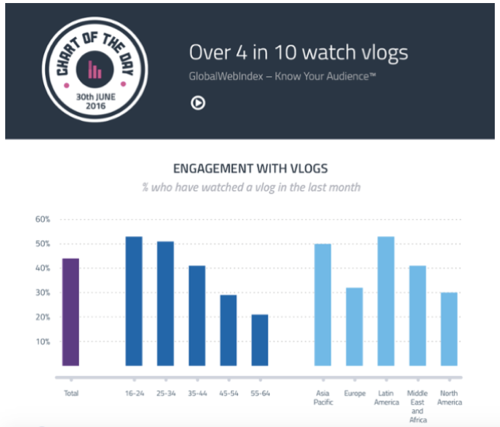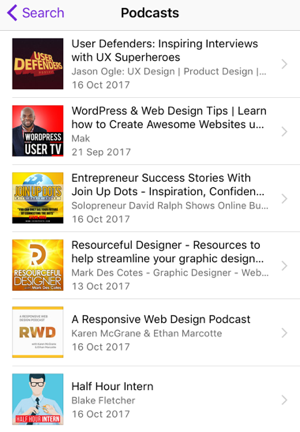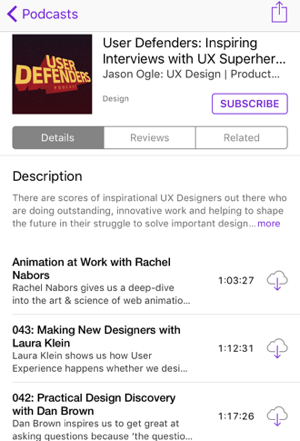Blogging, vlogging and podcasting: Which is the right marketing technique for your small business?
Having an active, high quality blog is key to building awareness and growing a successful business. But what if you don’t like to write blog posts and would rather do podcasts instead? Perhaps you’d like to give vlogging a try? All of which can become effective marketing techniques, and businesses looking to attract more customerscan’t ignore their appeal. Indeed, recent data suggests that 90% of companies have a content marketing strategy in 2023.
But which one should you choose? Let’s look at the pros and cons of each, so you can then decide which is best to use to promote your small business.
Blogging
If you’re not blogging, you’re missing out on lots of opportunities to get found online by prospects and to build your brand’s authority and reputation for expertise.
But while getting a blog up and running is easy, and while there are plenty of benefits to blogging for business, there are also some downsides to consider.
PROS
Setting up a blog is easy. Anyone can create a blog and fill it with informative and entertaining content. You don’t need special equipment, as platforms like WordPress, Drupal and Joomla make it a breeze to get your blog up and running. You also don’t need any special skills because, even if you may not be good at writing in the beginning, if you keep at it you will get better. The idea is to focus on your audience and on sharing information that’s relevant and interesting to them.
A great blog can get your business found in the search engine results. Google loves active blogs with well-written, properly optimised content, so they reward them with high rankings in the search engine results pages. This means a higher visibility for your business in the search results that can help new customers find you online. For example, if you’re crafting a blog post around a keyword phrase like “how to fix my plumbing” or “what type of life insurance should I buy”, users running a search on Google for that keyword phrase can find your blog post. And that’s how they’re introduced to your business.
Blogs are crucial for building your brand’s authority and reputation for expertise. Informing and educating your audience through blog content can have more power in comparison to vlogging which, despite its growing popularity, is often still perceived to hold more entertainment than educative value by some.
Blogs give readers control over their content experience. Many people suffer from short attentions spans. With blog content, they can skim articles, scroll down to see what’s relevant for them, re-read parts, save quotes, and so on.
This isn’t something they can really do with video blogs. Sure, users can fast forward but they won’t know which part of the vlog is going to be relevant to them. They could miss out on vital information while fast forwarding, whereas when reading a blog post, the key information is usually in the subheads, bullet points, or it’s highlighted in bold, blue or underlined.
CONS
Writing isn’t easy. An obstacle to writing blog content is the actual writing. Many people find it to be an anxiety-inducing task. So if you’re inexperienced or don’t like to write, blogging isn’t going to be enjoyable, and that’s something your readers can sense.
Blogs take time. It takes time to craft an informative and engaging article, decide which topics to write about, do the research, find a unique angle, and actually write the content. And this isn’t a one-time thing. To grow a successful blog that readers will come back to time and again, you need to be consistent so you can build a loyal readership.
If you want to give blogging a go, or if you already have a blog but want to get more out of it, make sure to check out our beginner’s guide to blogging for business.
Vlogging
Vlogging refers to video blogging, so it’s simply a blog in video form. While it’s still relatively new to the digital scene, vlogging is quickly becoming a popular way for businesses to educate and entertain users online. Just as video content has grown, Vlogging has also grown in popularity. One study by GlobalWebIndex revealed that 44% of global internet users are watching vlogs every month.

But should you use it just because it’s popular? Let’s look at the pros and cons of vlogging so you can decide whether it’s worth investing your time and resources into.
PROS
Vlogging can set you apart from the crowd. While video is quickly becoming the norm, vlogging for business is still in its infancy, which means that many of your competitors are probably not using it. So this is your chance to stand out from the crowd. Just make sure to take advantage of the many ways you can use vlogging, including animations, drawings and more.
Here is a simple example:
Vlogs have the potential to go viral in a way that blogs don’t. That explains why YouTube is the second most popular social network in the world. Other social networks are also encouraging the use of video content with new features like Twitter’s Periscope, Instagram’s 60-second videos and stories, and Facebook’s 360 video and live video.
But while creating vlogs is a step in the right direction, if you want to get social shares you’ll need to make your vlogs fun and entertaining because it’s what gets 76% of users to share it.
For example, which do you think is more fun and would be shared more: a long blog post or a vlog on how to organise your closet? Probably the vlog, especially if the information is presented in an engaging way, like in this example:
Of course, you can try to experiment with both blogs and vlogs, and see which one gets better results.
Vlogs can help turn those boring topics into something much more engaging and exciting. Writing a tutorial on how to choose paint colours may seem boring, even if you include images. But when you create a two-minute vlog like the one below, you can turn it into a fun experience for both you and your audience:
So, whether it’s an old blog post that didn’t catch on, or a new topic that might not get much engagement if written as an article, try turning it into a vlog. It has the potential to make it more engaging, which can also result in more shares and comments.
Vlogs are also great to use when you’re launching a new product or service. You can create a short vlog where you can talk about it and show people exactly how it works. Need to explain a difficult concept? Try using animations in your vlog to make it easier to understand.
Vlogs build trust. And trust is the foundation of sales. Some people are sceptical about buying products and services online from businesses they don’t know. They fear of being cheated. But with vlogs you have the opportunity to give them the confidence to buy from you by 1. Showing your face so they know you exist and 2. Presenting your business and products in a conversational form, which helps create a sense of individual approach.
CONS
Vlogging isn’t suited to every business. According to a GlobalWebIndex study, vlogs are favoured by younger audiences. So if your target audience is aged 16 to 34, you may want to jump on board and start using vlogs to promote your small business.
Its effectiveness also depends on your business and what you’re selling. For example, the vlog is hailed in the cosmetic industry as the strongest marketing tactic available today. Make-up and fashion brands are also having great success with vlogging.
Now, all these stats and studies show for which type of businesses vlogging works best. But that doesn’t mean that if you’re not selling cosmetics or if your target audience is 34+ vlogs won’t work for you. The only way to find out is to try it.
Google can’t watch vlogs. In other words, it can’t understand what’s in your video, and use that to rank it for the right keywords. And while you can keyword-optimise your vlog content in the title and description, the opportunities are limited when compared to the good old-fashioned blog. So if you want prospects to find your business in the search engine results, you shouldn’t give up blogging.
As a solution, you can integrate vlogs into your blog posts. For example, if you’re launching a new product you can write a blog post about it and also add a vlog where you show people how that product looks and how to use it. This way you can optimise the content to include those relevant keywords and, at the same time, give users the option to watch the vlog and see your product in action.
It’s more time-consuming than writing a blog post. Apart from the production of the vlog itself, you’ll also need to edit it. Cutting, adding, touching up the sound and so on can take some time (more if you’re a beginner and don’t have any technical skills).
The good news though is that your vlogs don’t need to be perfect. In fact, research shows that users are put off more by videos that don’t explain the product or service clearly enough than by the low quality or poor design of the video.
And a final disadvantage of vlogging has to do with the format. If you’re self-conscious, you may have trouble talking in front of the camera. You can however get someone else on your team to vlog for you and be the face of your business.
Want to try vlogging for your business? Here are two good places to get you started:
- A complete course on blogging for business on LinkedIn
- Lots of tutorials and tips on vlogging from freevlog.org
Podcasting
Podcasting is another excellent way to promote your small business. If you’re unfamiliar with the concept of podcasting, it’s a periodic audio (now also available as video) release featuring one or more people talking about a specific topic.
For example, here are some podcast channels that show up on Apple’s podcasts when running a search for “web design”:

And when you click on the first channel, you’ll see a list of episodes you can listen to:

There are lots of small businesses that are using podcasts to reach customers. It’s because they realised just how powerful they can be, considering 89 million people listened to a podcast in 2015, nearly double the number from 2008, according the Pew Research Center.
As with blogging and vlogging, podcasting also has its advantages and disadvantages. Let’s look at the most important ones.
PROS
Creating a podcast is easy and affordable. If sitting in front of a camera makes you feel uncomfortable, with podcasting you can relax and just talk about what you’re passionate and knowledgeable about.
You can start podcasting today with just your smartphone and less than £100. These resources are great for learning how to get started:
You can get your audience’s undivided attention. A great benefit of having a podcast is that your listeners can download and listen to it at a time that is convenient for them. This may be while they’re driving, exercising, on a train or a plane, or anywhere else they are looking to pass the time. There are two advantages that this offers: 1. You have a captive audience and few distractions and 2. You enter people’s lives on their own terms, which makes you a more welcome guest so they’ll be more open to what you have to say.
No competing messages. Unlike videos on YouTube or Facebook, or even industry blogs where ads from competitors may pop up while reading an article, when people listen to your podcast, they will only hear your messages. So when they tune into your show, you know they’re tuning in to you only.
It’s easy to measure the success of your podcast. Unlike blogs and vlogs, with podcasts what you need to do is simply to track the number of downloads of individual episodes as well as the number of subscribers to your podcast. This is great because you can immediately see the impact of your efforts.
CONS
It’s not easy to build an audience. Sure, there are people who search for podcasts but most often you’ll need to promote your podcast to get the word out.
One way to do this is through your blog and social media channels. Another way to promote it is to appear as a guest on someone else’s podcast. Just like guest blogging, you need to make sure that that podcast is reputable and relevant for your business.
You need to stick to a schedule. You know when you watch an episode of a great TV series and then you keep checking in to see if a new episode has been added? Two weeks pass and nothing. And then you stop checking and simply forget about it.
It’s the same with podcasts. Your listeners expect a new podcast every week or at regular intervals. You won’t stand a chance at developing and maintaining an audience if you don’t deliver.
This can be difficult for a small business with limited time and resources as it can take hours to research, register and release a podcast. Add to that the time it takes to promote it on your blog and the various social networks you’re on.
You need equipment. To produce a quality podcast, you’ll need a microphone as well as audio editing software (and the skills to use it). You can either learn how to do it yourself, or you can outsource the editing to a freelancer or an audio editing firm, depending on your needs and budget.
Wrapping up
Blogging, vlogging and podcasting can all help to inform and entertain your audience, and to build your business. They’re all powerful. They’re all worthwhile. And each has its own unique role.
But if your time and resources are limited and you need to choose one or two, then go with the ones that make the most sense for your small business, based on your metrics, market demographics, and what you’re selling.
